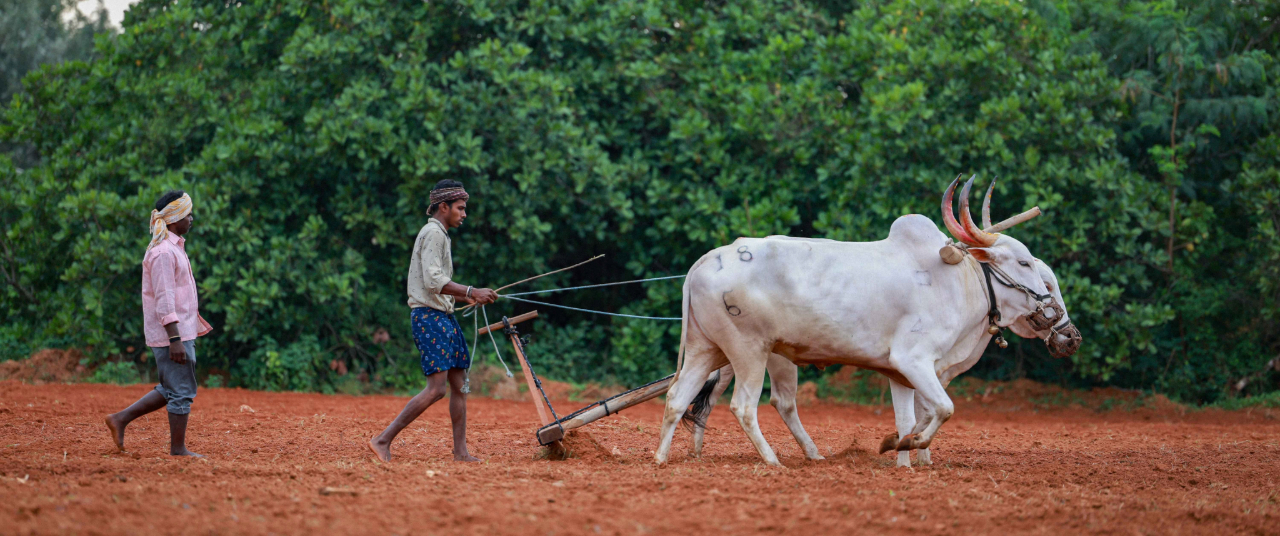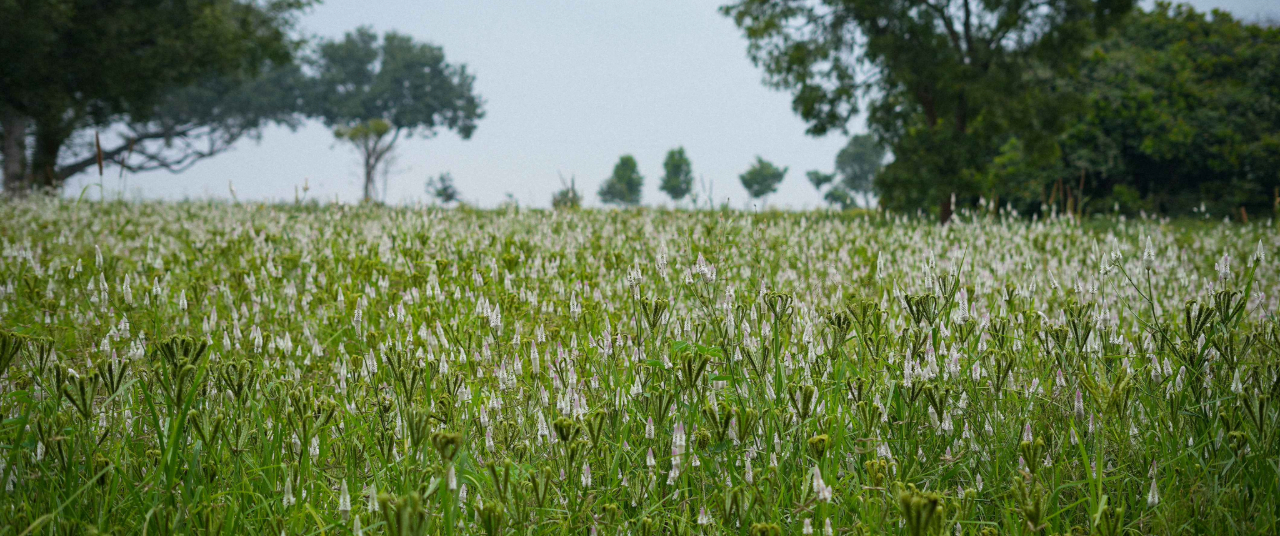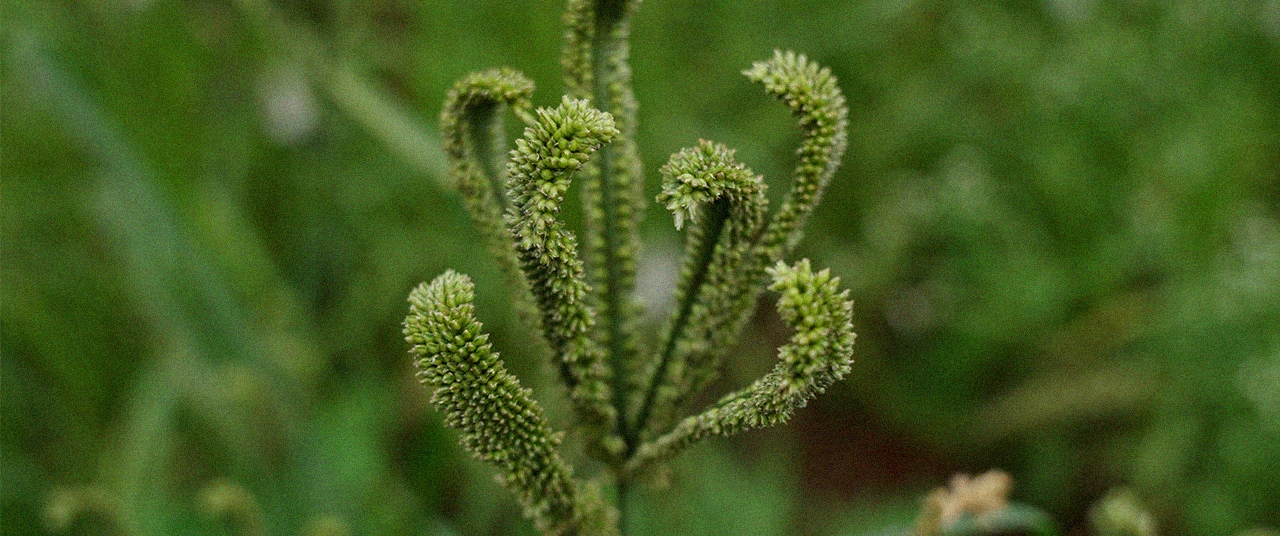Pollinators, seed dispersers, agents of natural pest management, enrichers of the human soul—avian diversity serves ecosystems in numerous ways






Editor’s note: To know Rama Ranee is to learn about the power of regenerative practices. The yoga therapist, author and biodynamic farmer spent three decades restoring land in Karnataka, envisioning it as a forest farm in harmony with nature. In ‘The Anemane Dispatch’, a monthly column, she shares tales from the fields, reflections on the realities of farming in an unusual terrain, and stories about local ecology gathered through observation, bird watching—and being.
Blocking the morning sun and driving carpenter bees berserk outside one of our windows, the Thunbergia vine-draped trees of Kadamba (Neolamarckia cadamba) and Akash Mallige (Millingtonia hortensis) formed a curtain of dense green and drooping clusters of purple flowers. The flowers seemed to be shaped so for these rounded forms. Watching the bees flit with a deep drone was soporific. Then came a sinister ‘chuckle’ and a guttural sound, part-dog, part-sylvan spirit, distinctly arboreal.
Through the creepers, I saw a crow-sized bird, green with yellow breast, a magnificent turquoise beard, and a viciously curved beak, on a low branch. That was my first close encounter with the Blue-Bearded Bee-eater (Nyctyornis athertoni). As the name suggests, it thrives on bees. While perching strategically close to flowers, it grabs the bee midflight. A different approach is employed for preying on honey bees.
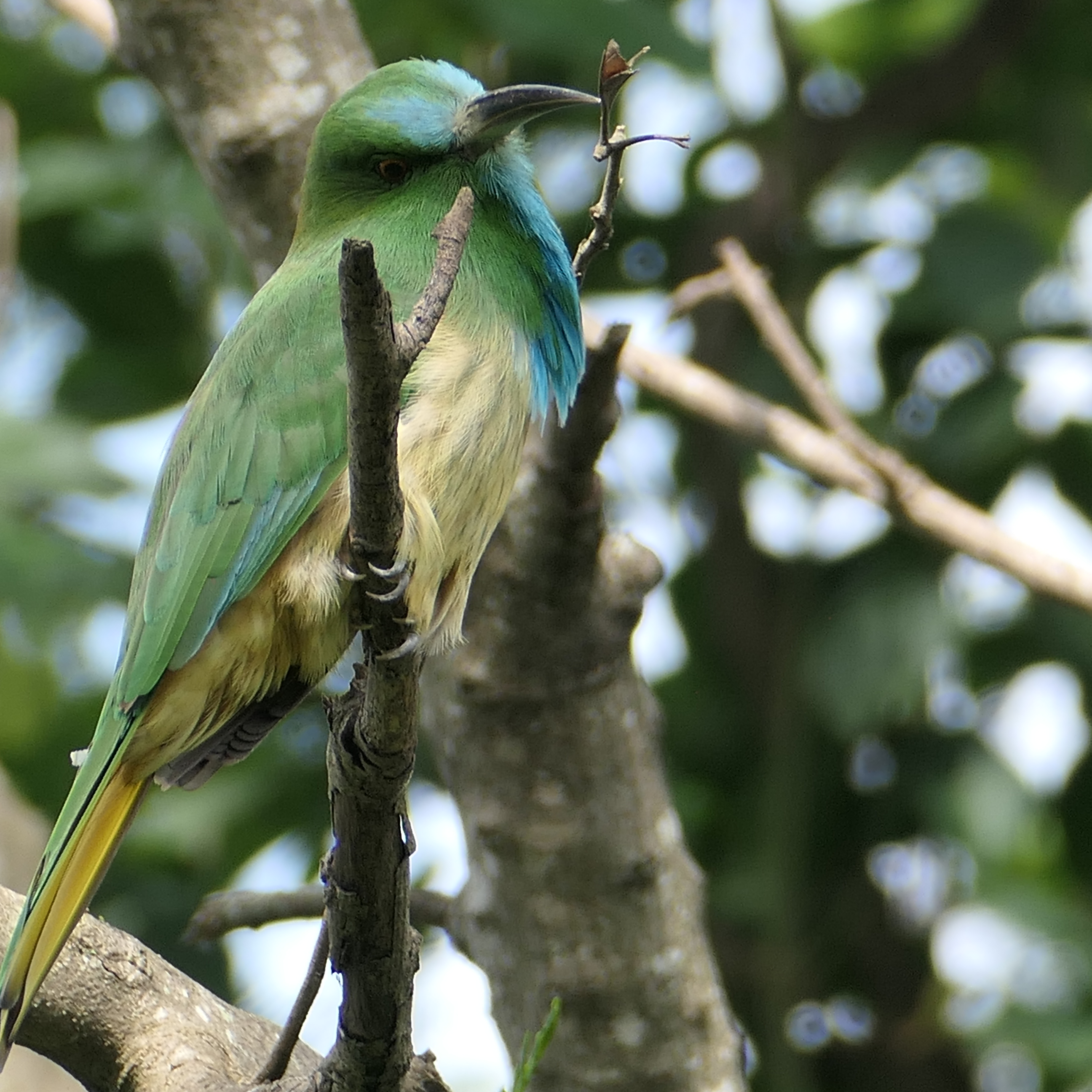
A hive of the rock bee or giant bee (Apis dorsata), suspended from the wide branch of a Maha Neem (Melia dubia), bustled unusually. Silhouetted against the slanting rays of the sun were a pair of Blue-Bearded Bee-eaters at the other end of the branch. After disturbing the comb, they snapped up the agitated bees rapidly. On the two occasions that I have observed them feasting directly on hives, it was late evening just before dusk, about the time bees return after foraging. Was the timing a part of the strategy?
The Blue-Bearded Bee-eater is a bird of the Western and Eastern Ghats, elusive and rarely sighted outside forested areas. The sightings of these birds—both adults and juveniles—on the Anemane Farm nearly two decades after we began farming indicated that the conditions were congenial: a habitat consisting of well-wooded areas with clearings (they prefer the middle-story of moist deciduous and secondary evergreen forests); ample food, mainly bees, other flying insects, and grubs; proximity to water bodies and ravines perhaps offering nesting spots like sheltered mud banks. Bannerghatta National Park and its environs, including our forest farm, could be considered a suitable habitat. These conditions were shaped by a host of events and dynamics within the farm ecosystem.
Darting, camouflaging, and swooping among us
Carpenter bees (Xylocopa caerulea) nest in wood, such as dead trees and logs, and feed on pollen and nectar, much like other bees. Honey bees, especially rock bees, require compatible nesting sites and appropriate climate that is neither too hot, nor too wet. It was no coincidence that the regeneration of indigenous vegetation and growth of a food forest witnessed bees, butterflies and other insects in larger numbers. Indigenous flora included flowering climbers like Kaadu seege (Senegalia pennata), trees like Red Silk Cotton (Bombax), Honge (Pongamia pinnata), and Nerale Hannu or Java plum (Syzygium cumini). The food forest comprises Moringa (Moringa oleifera), Hummingbird tree (Sesbania grandiflora), curry leaf (Murraya koenigii) and varieties of citrus besides crops such as millets. Their diversity, too, increased, as did species of insect-eating birds.
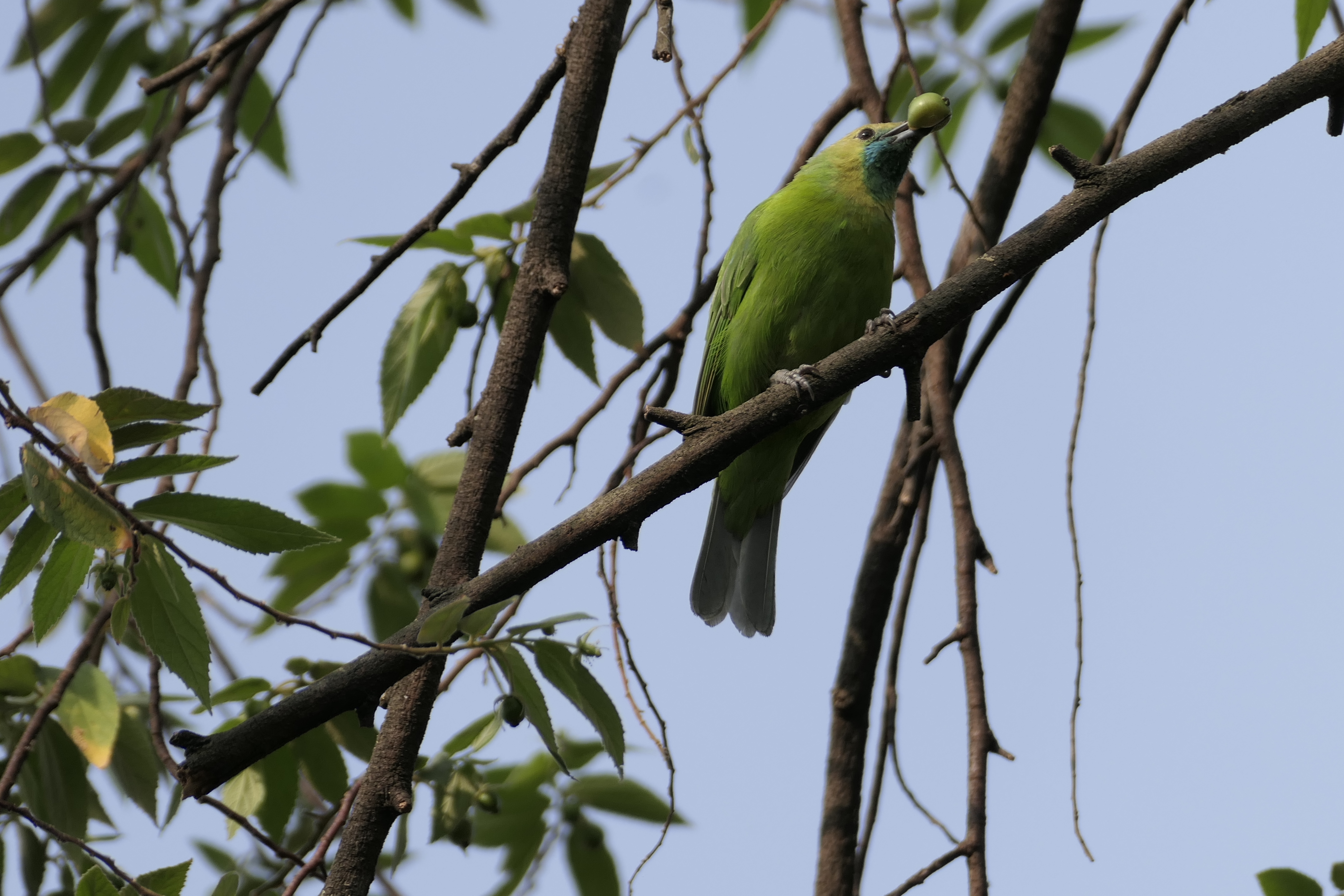
On bright, sunny days after a few showers, the sky is alive with dragonflies, beetles, butterflies, and bees. In pursuit of prey are birds equipped with beaks, feathers, flying patterns, speed and agility, and strategies—uniquely theirs, gifted for catching prey on the wing.
An Asian Green Bee-eater (Merops orientalis) perches on fences or low branches, swooping down on a butterfly immersed in the warmth, tantalised by blooming curry leaf flowers. The Indian Paradise Flycatcher (Terpsiphone paradisi) has scant regard for humans, darting into the grass to scoop up a bite, its long tail swishing in a graceful acrobatic swerve. Ashy Drongo (Dicrurus leucophaeus) and other species of the bird are active through the day, late into the evening.
The Asian Palm Swift (Cypsiurus balasiensis) is an expert in aerial foraging, catching insects mid-flight with its wide, gaping mouth. It rarely touches the ground, living its entire life airborne. The graceful dance of swifts and swallows like the Red-rumped Swallow (Cecropis daurica), gliding overhead in flocks, conversing in sweet but mellow tones, is indescribably hypnotic. I have often seen them skim over the water delicately, to sip it without breaking rhythm.
Once I was the centre of a ‘ceremony’ which left me elated, as if I, too, was airborne. While I stood in the semi-open verandah of our cottage, watching the light bounce off the lake at midday, a flock of about ten Red-rumped Swallows swooped above my head, weaving in and out of the arched openings in silence, looping around me in a strange ritual. I felt truly bewitched and breathless! Were they exploring the depths for nesting, or training their young, or looking for insects, or just being? It did not matter.
In some cultures, they are harbingers of spring and symbols of good times, and in a sense, as a farmer I believe that. Imagine the multitude of insects that we would have to deal with if they were to descend on our crops! Insects are among the main causes of crop damage that can reach gigantic proportions. China’s Great Famine of late 1950s and early 1960s was induced by the eradication of sparrows (for fear that they were destroying crops), triggering ecological imbalance. Desert locust swarms causing famines are a serious threat in Africa and Asia. Birds control insect populations and mitigate such threats.
As the purple twilight descended with a hush, the hilltop stirred with the calls of the Indian nightjar (Caprimulgus asiaticus) concealed in the sandy ground on the water’s edge. They love the scrub and scattered bushes. A late evening walk is the best time to spot them, except that before the eye sees them, they are up in the air from right under one’s feet, their feathers a perfect camouflage in the dry terrain. Like the less common Jerdon’s nightjar (Caprimulgus atripennis), they are crepuscular insectivores, hawking moths, beetles and grass hoppers mid- flight.
The graceful dance of swifts and swallows like the Red-rumped Swallow (Cecropis daurica), gliding overhead in flocks, conversing in sweet but mellow tones, is indescribably hypnotic.
Densely wooded trails thick with leaf litter are a balm to the senses. Cushioned foot falls, the fragrance of crushed leaves and mold, and mild tones of brown and russet, with an aura of an enchanted land of elemental beings and Jerdon’s nightjars—the silent hunters concealed in the litter. We have startled each other quite often; once on a path below the cottage, a tunnel of intertwined branches and low bushes, where the bird must have been brooding. I found a light brown egg perfectly camouflaged, on the ground.
Also read: Farming under the elephant's nose: Lessons in crop choices
Of keystone species and ecosystem restoration
At the windows in the kitchen or study, Loten’s sunbirds (Cinnyris lotenius) are a welcome diversion. Perching on the grill, the blue-black males or the soberly plumed females tap the glass pane tentatively, and for a suspended moment, we contemplate each other in silent acknowledgement.
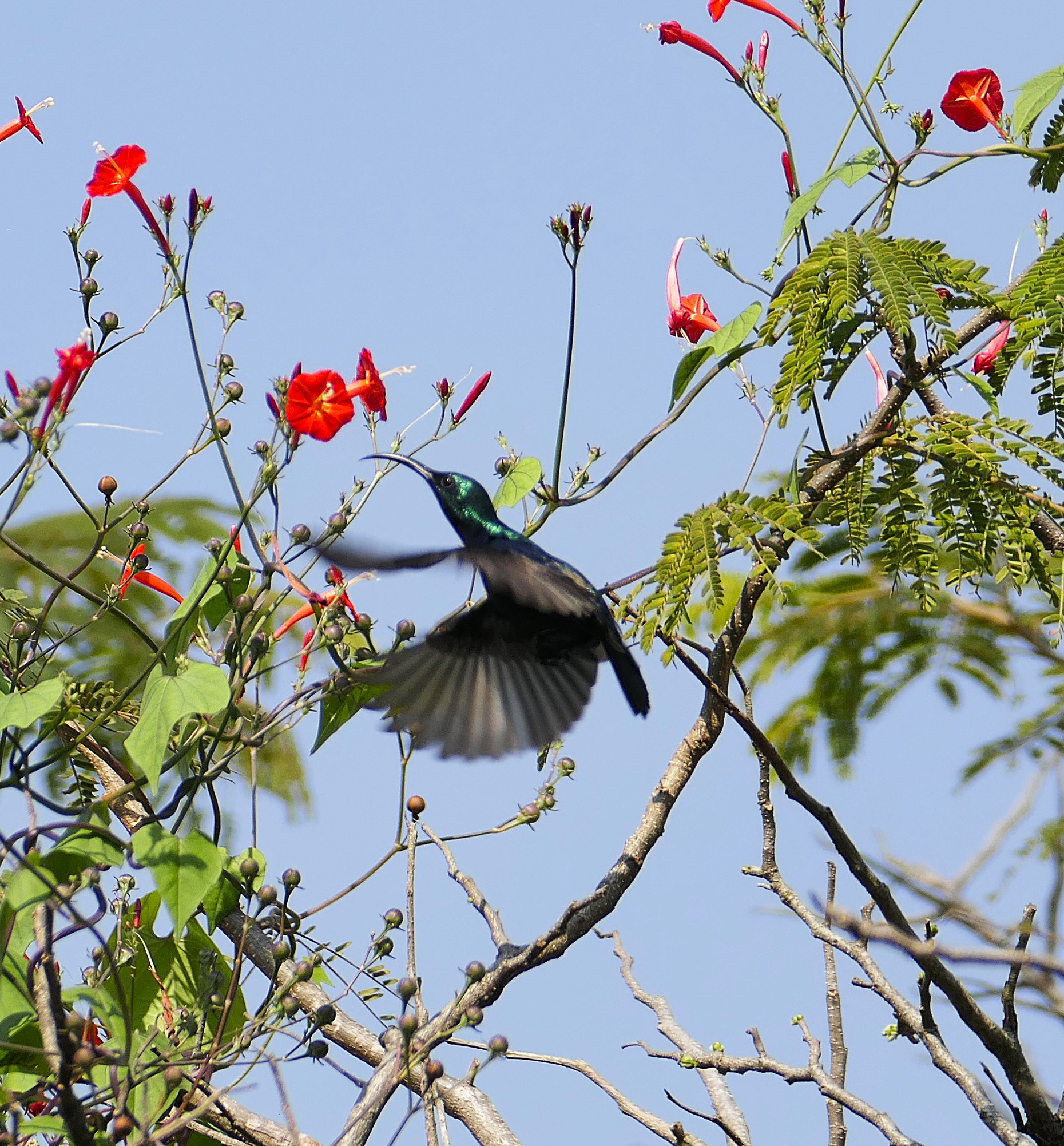
A morning alarm is redundant when natural bird calls punctuate the hours of the day and night.
Bulbuls, Indian White-eyes (Zosterops palpebrosus), leaf birds (a family of passerine species), and a host of other omnivorous birds thrive on fruit trees. A lone Cluster fig (Ficus racemosa) and a Singapore cherry (Muntingia calabura) tree at two ends of the farm were the hubs where they congregated. Gradually, they seeded their own garden.
Along with nectar-rich flowering plants like Hibiscus, Moringa, and Hummingbird trees came sunbirds. They are important pollinators of not only agricultural crops, but wild indigenous plants, too, like the East-Indian screw tree (Helicteres isora), dispersing seeds in the process. Mutualism between frugivores (fruit-eating birds and plants), such as the association between Bulbuls and Jyotishmati (Celastrus paniculatus), lies at the basis of eco-restoration. A decade ago, there was just a single gnarled liana of Jyotishmati, valued greatly in Ayurveda for its medicinal properties. Today, there are several in various stages of growth, in different locations. We might credit Bulbuls, which eat the scarlet fruits, for having fulfilled their role well as seed dispersers.
A morning alarm is redundant when natural bird calls punctuate the hours of the day and night. Those who wish to rise in the auspicious period of Brahmi-muhurtha, at 4 am, ought to cue into the piercing cries of peacocks. 6 am offers a medley of songs hard to ignore. Owls, either the Indian Scops-Owl (Otus bakkamoena) or Mottled Wood-Owl (Strix ocellata), wrap you in the night’s mantle of a subtle soundscape.
{{marquee}}
The most compelling sound that pulls me out of the haze of drowsiness is a series of sharp, staccato knocking and drumming. During the early years, coping with a new house on an inaccessible farm meant dealing with workmen at odd hours of the day. Carpenters starting work early in the morning was unusual, but not improbable, though not entirely welcome! Imagine my shock when three woodpeckers sat at the window of the first floor, two boring the frame and tapping the glass with precision and devastating speed, while the third kept watch. The Baage tree (Albizia lebbeck) just outside the window made their task easier. The Baage acquires new holes every other day, and the window has survived the onslaught of the Black-rumped Flameback (Dinopium benghalense), and the larger and less common White-naped Woodpecker (Chrysocolaptes festivus).
A distinct drumming that begins vigorously, gradually fading to a slower tempo, followed by an intermittent ‘weep, weep’ call belongs to the Rufous Woodpecker (Micropternus brachyurus) seeking a mate or exploring the bamboo thickets for ants. Like true percussionists, they seem to choose the surface carefully, shifting positions to find ideal points for drumming. Merging into the shadows of the branches with rusty, black-banded bodies they raise their young in carton nests of arboreal ants such as Crematogaster ants, by hollowing a chamber for their eggs. It is paradoxical that during this period, the woodpecker, which usually preys on these ants lays its eggs in their nest, and the ants, which normally feed on bird eggs choose to allow them; neither harm the other! Apparently both benefit mutually from this nesting habit. The intriguing symbiotic relationship between the woodpecker and ants is certainly worth exploring. A compelling observation is that on our farm, both have increased in numbers; there are several pairs of Rufous Woodpeckers and more numerous carton nests.
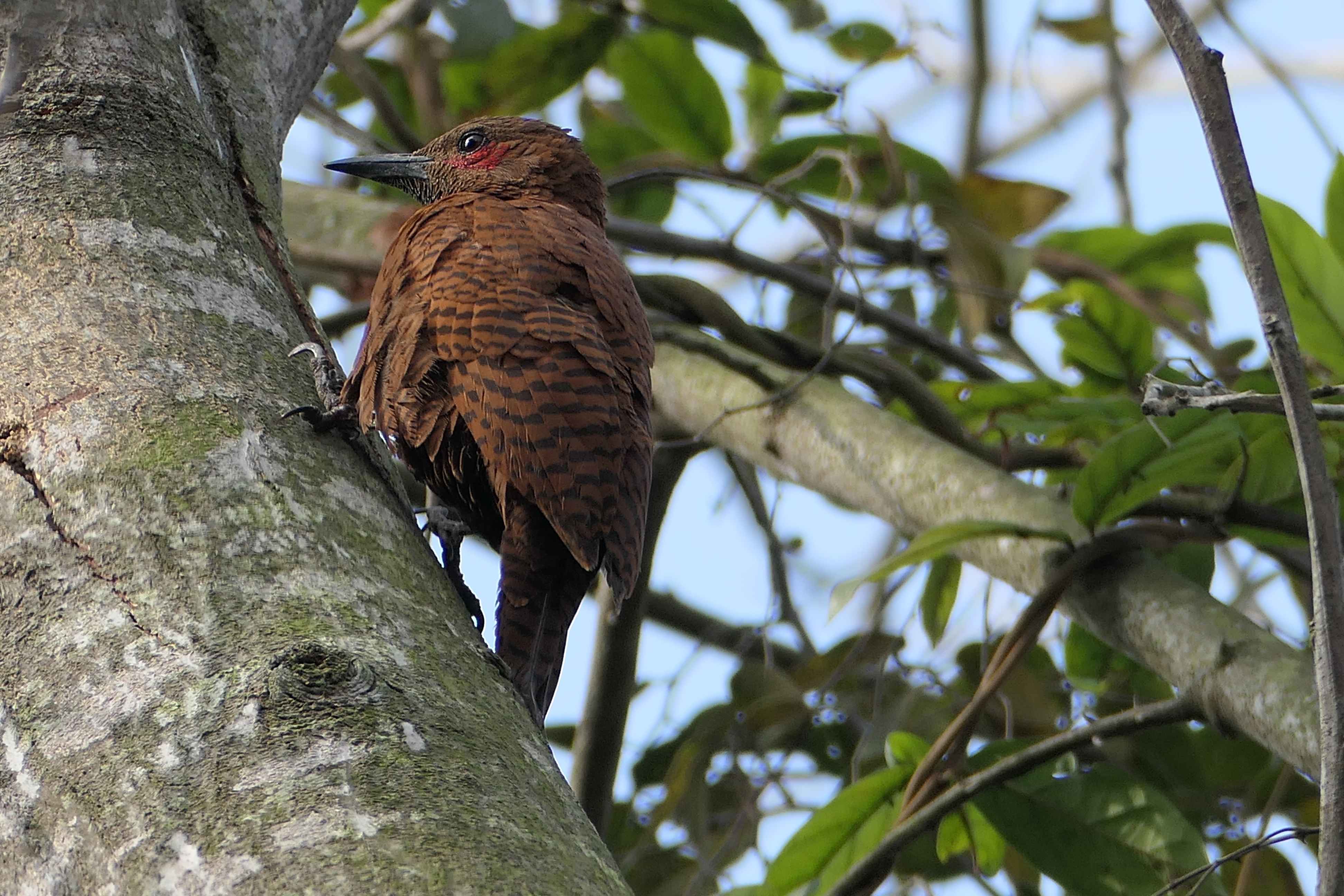
Woodpeckers are keystone species which impact the health of the forest. They have evolved to pry bark and wood for borers and termites, thereby controlling their populations, contributing towards pest management. By excavating cavities for nesting which are vacated after the season, they create roosting and nesting spaces for other birds which require existing cavities, like owls and hornbills, and for small mammals. Hence, they are bioindicators of a stable forest ecosystem with old, large trees—required for foraging and nesting—and a diversity of birds, insects, and other life forms.
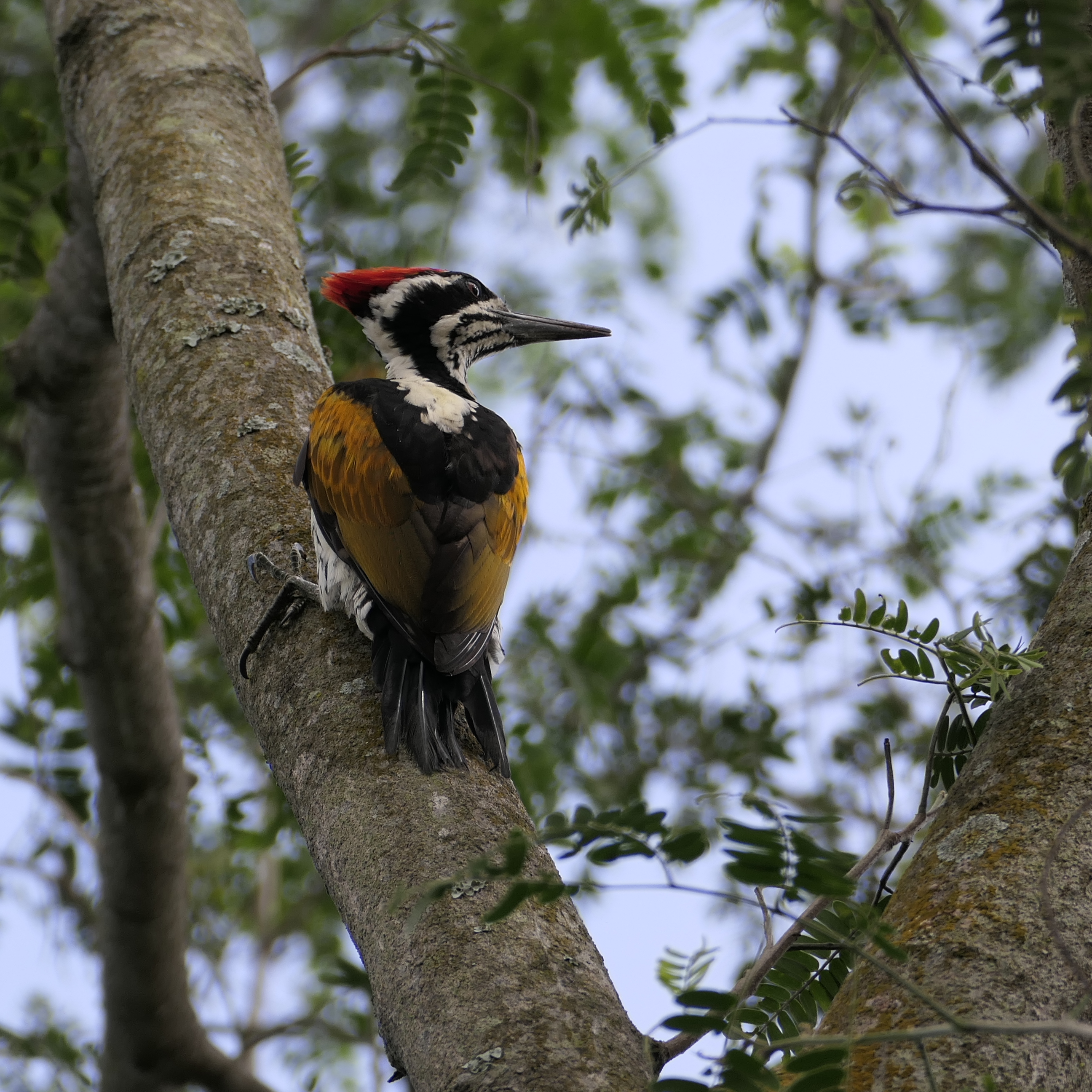
Also read: What it takes to breathe life into degraded farmland
Maintaining ecological balance
A commotion outside the window, the panicked squeaking of a squirrel, and a flurry of grey wings revealed a Shikra (Accipiter badius) in frenzied pursuit of a squirrel among potted plants—half gliding, manoeuvring through a barely six-inch space, a gaze so focused that it saw nothing but the prey and the path to get to it. A raptor is an apex predator epitomising strength and perseverance, eyes that sweep the ground below for the slightest movement, and striking with tactical precision.
Being an agricultural farm in a hilly, forested landscape with rock faces and caves makes us a suitable hunting and nesting ground for birds of prey. Field mice, hares, and other rodents, small mammals, reptiles—chiefly lizards and snakes—and a variety of birds, especially fowls and pigeons, attract many species, from the sleek Shikra to the high-flying Crested Serpent Eagle (Spilornis cheela), the magnificent Bonelli’s Eagle (Aquila fasciata), and Black Eagle (Ictinaetus malaiensis). While the Black Eagle glides silently under the tree canopies like a shadow, the Bonelli’s Eagle soars over the hill top, above the canopies, usually in pairs, diving in a flash, legs outstretched grabbing the pigeon midflight with formidable talons, wings a five-foot span, giving it the lift even when it is closer to the ground. Its sheer power and skill to navigate confined spaces are awe-inspiring and intimidating! Bunches of feathers strewn under the tree mark the Bonelli’s perch. Over the last four years, Anemane has been fortunate to host a pair and witness the flights of their offspring.
Being an agricultural farm in a hilly, forested landscape with rock faces and caves makes us a suitable hunting and nesting ground for birds of prey.
True to its name, the Oriental Honey Buzzard (Pernis ptilorhynchus) preys on bees and hornets, swooping down on hives, feasting on larvae. Its slender head and neck and long tail distinguish the pair of silver-grey male, and the golden-brown female, as they circle in the air. We shared a few pensive moments together: a nonchalant male relaxing near the Flame of the forest (Butea monosperma), and I on the other side of the path, behind the lens.
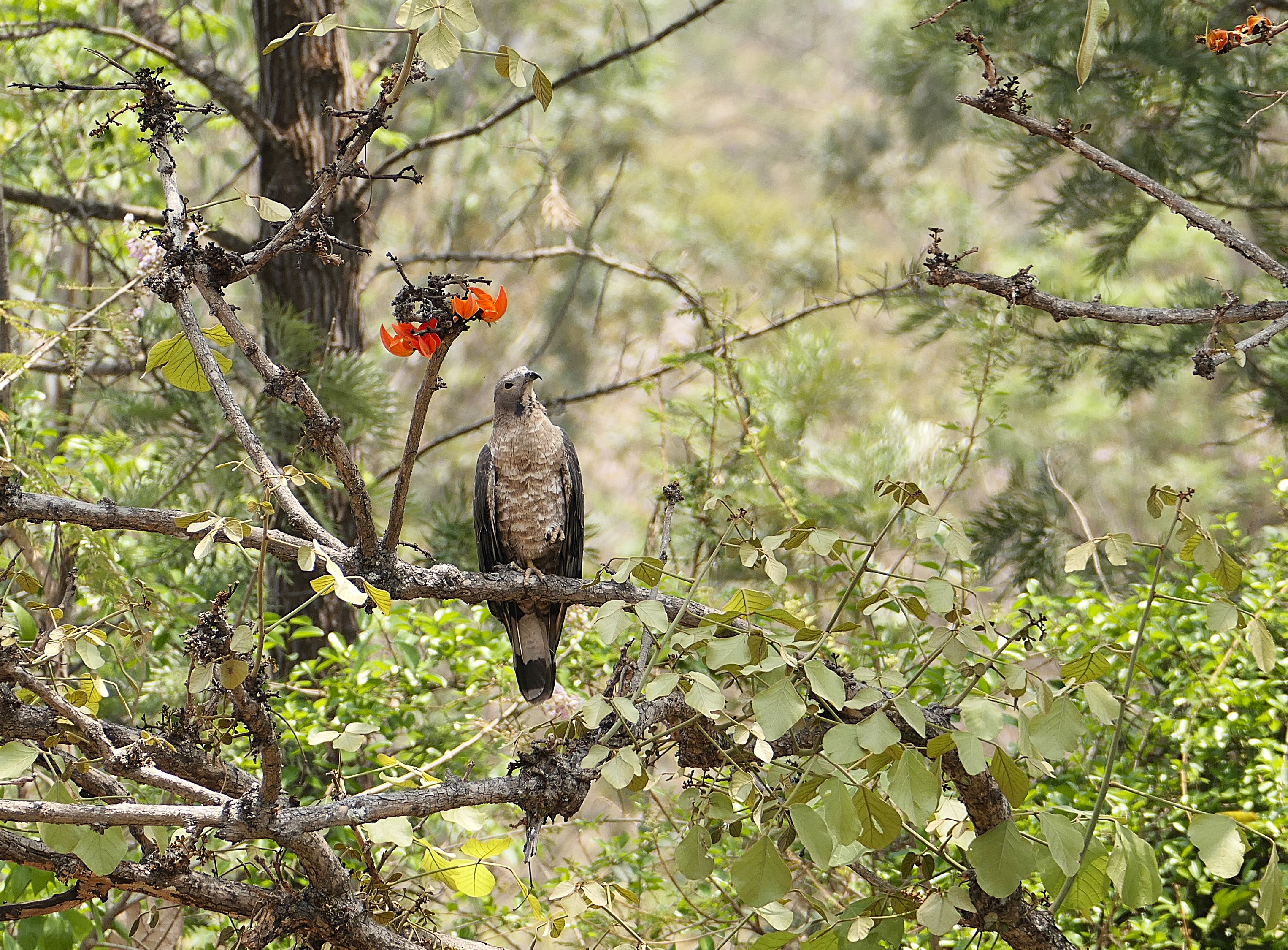
Diverse life forms thrive in a balanced ecosystem, and avian diversity is a good measure of its health. Internalising the truth that we are an intrinsic part of that ecosystem, and that as a species we have the power to choose consciously, to remain integrated and whole, is vital for the health of the planet and all its denizens.
I do not know what goes through the bird’s mind when it sees me, but living with a rich birdlife is deeply engaging for me. They are an inextricable part of my life, as partners and companions, nourishing the soul with songs and beauty, bonding with the heart in ways that go beyond co-existence into the shared realm of Gaia’s breath.
Artwork by Khyati K
{{quiz}}
Explore other topics
References

Where is the Blue-Bearded Bee-Eater most commonly found?
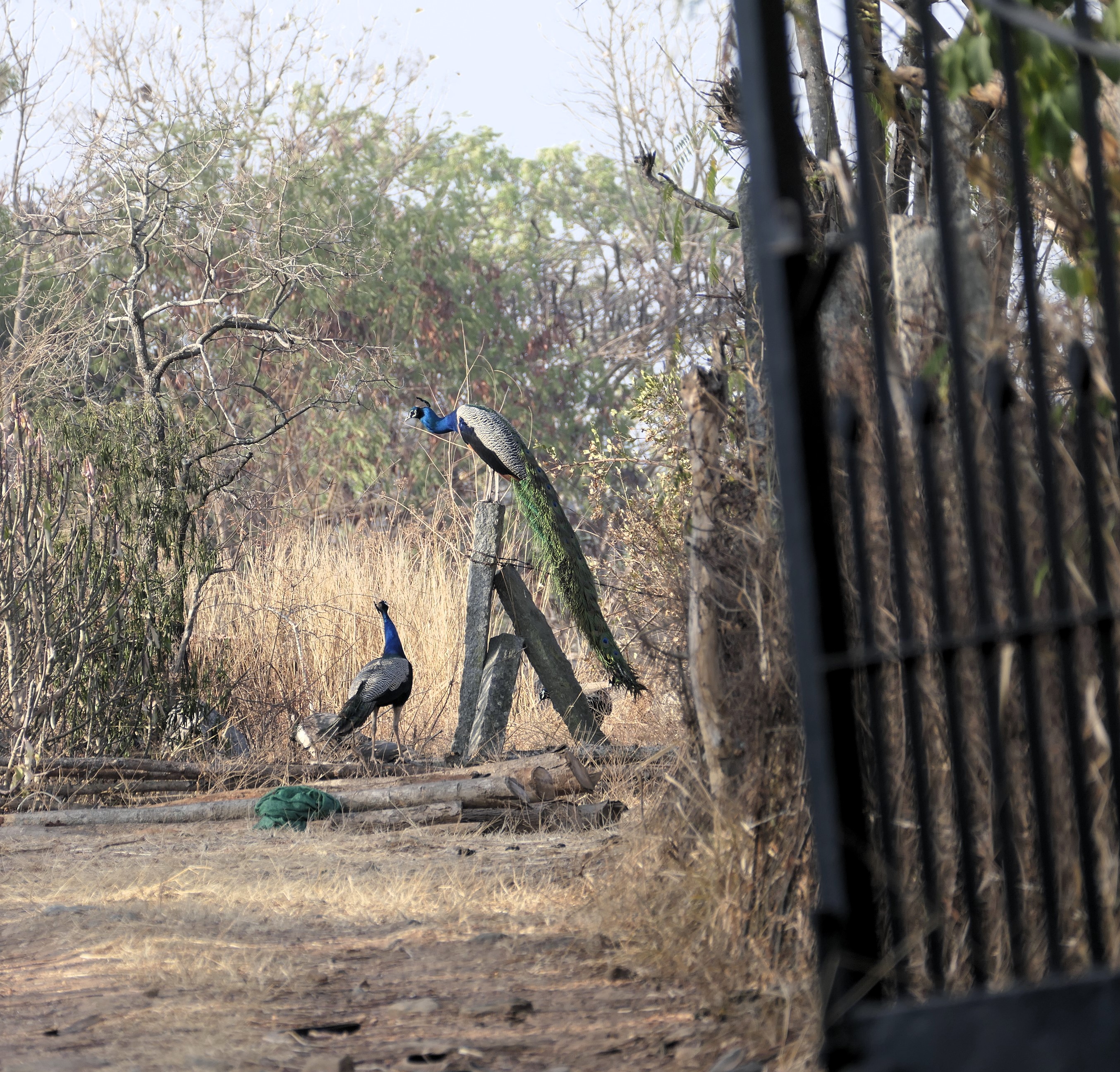
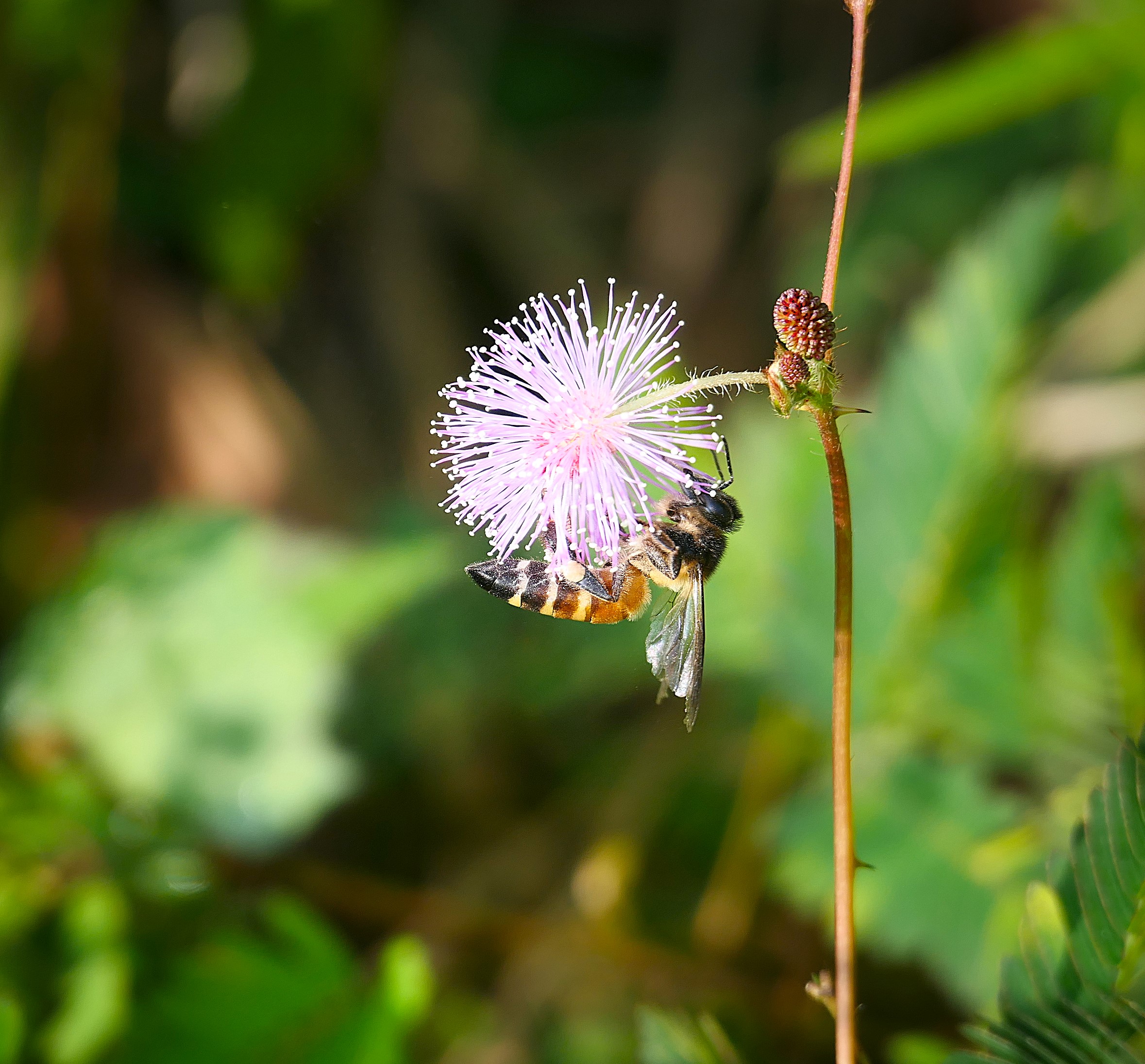
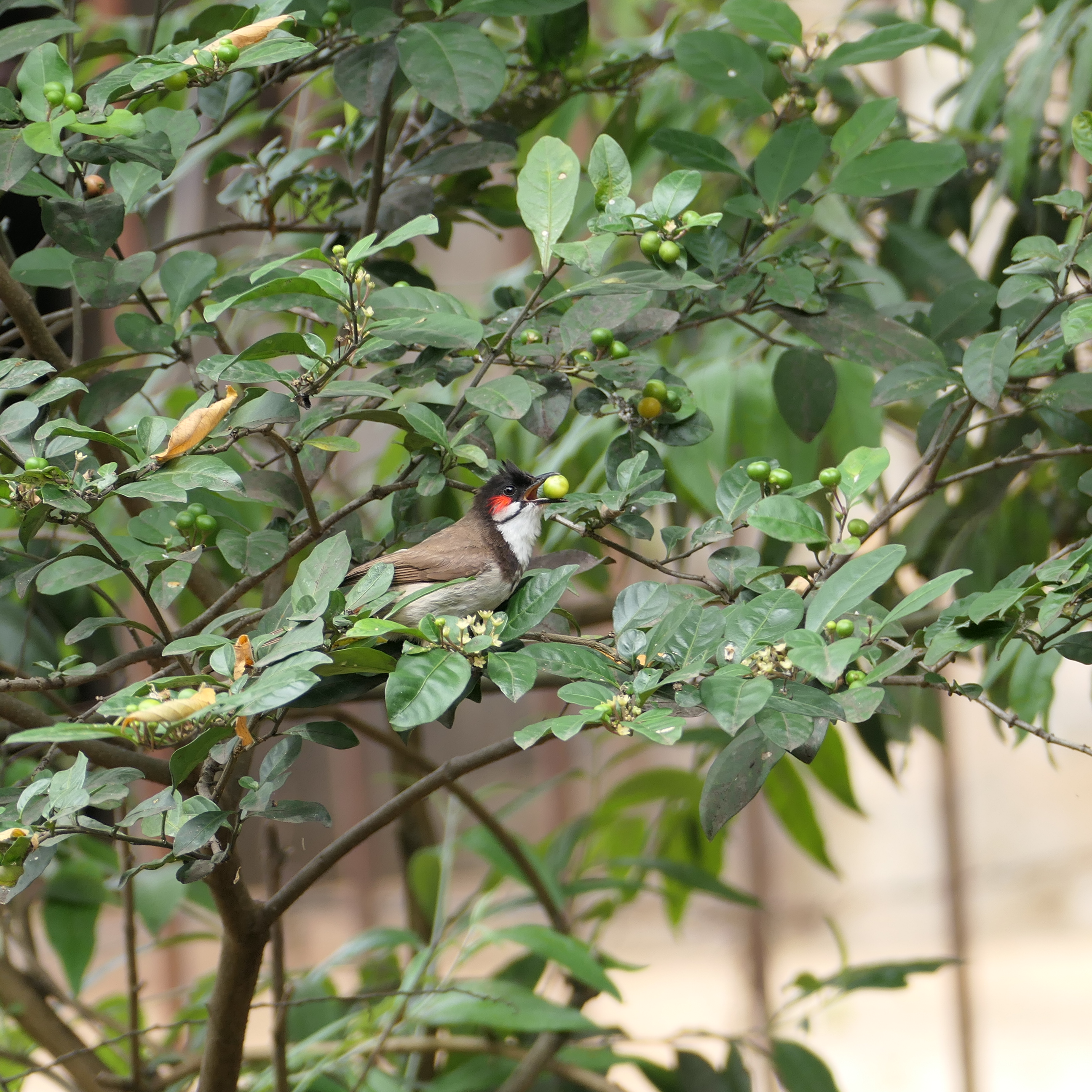

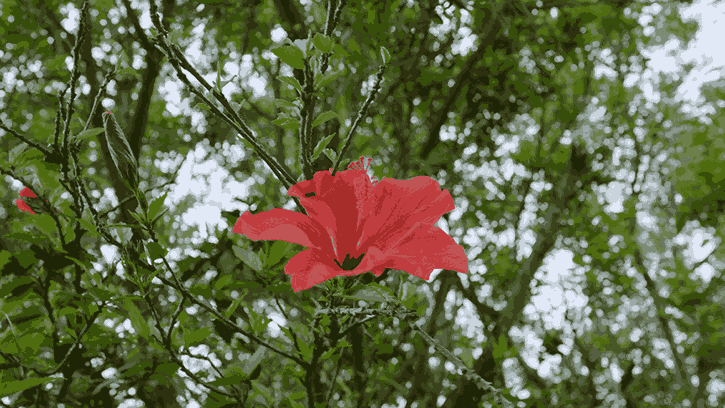
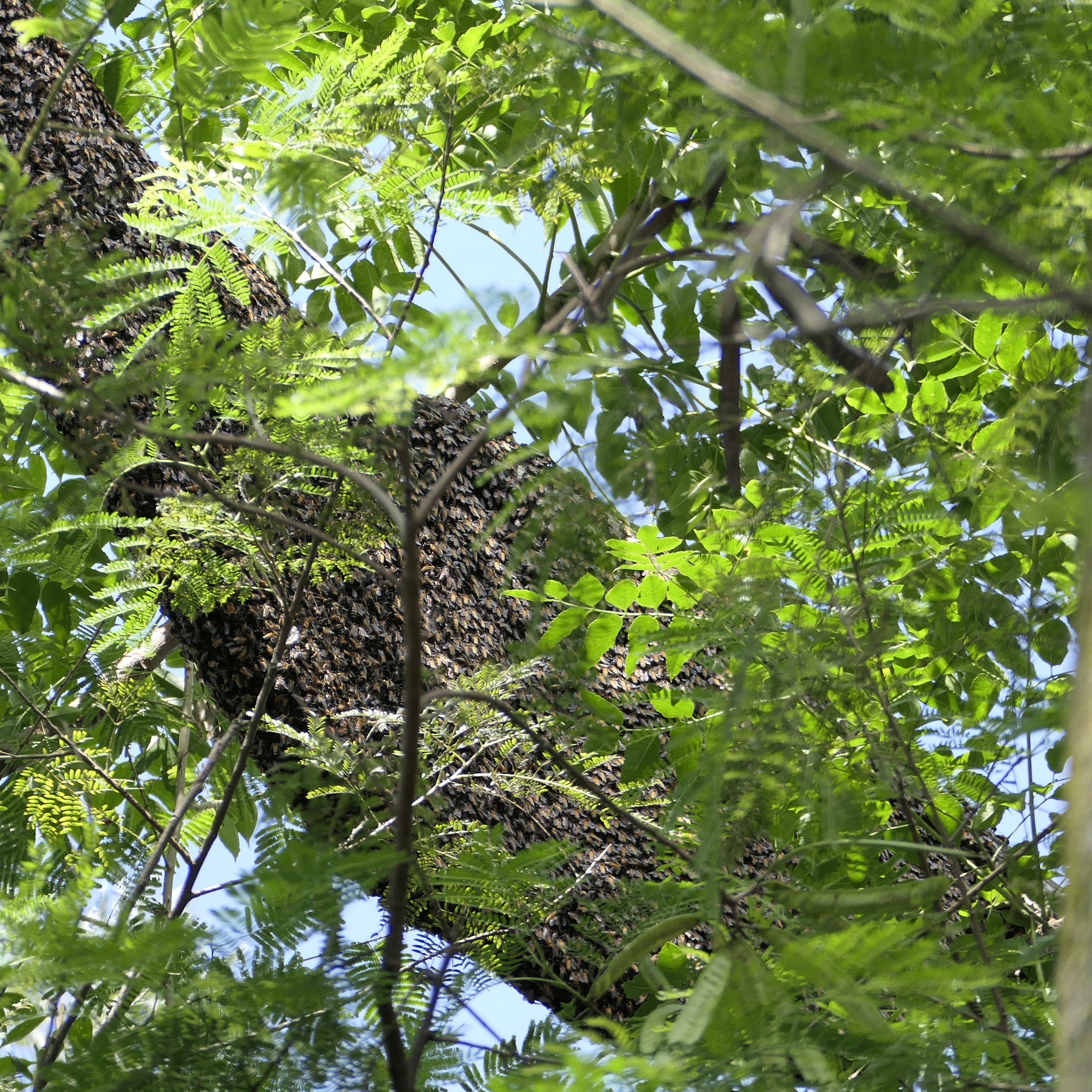


















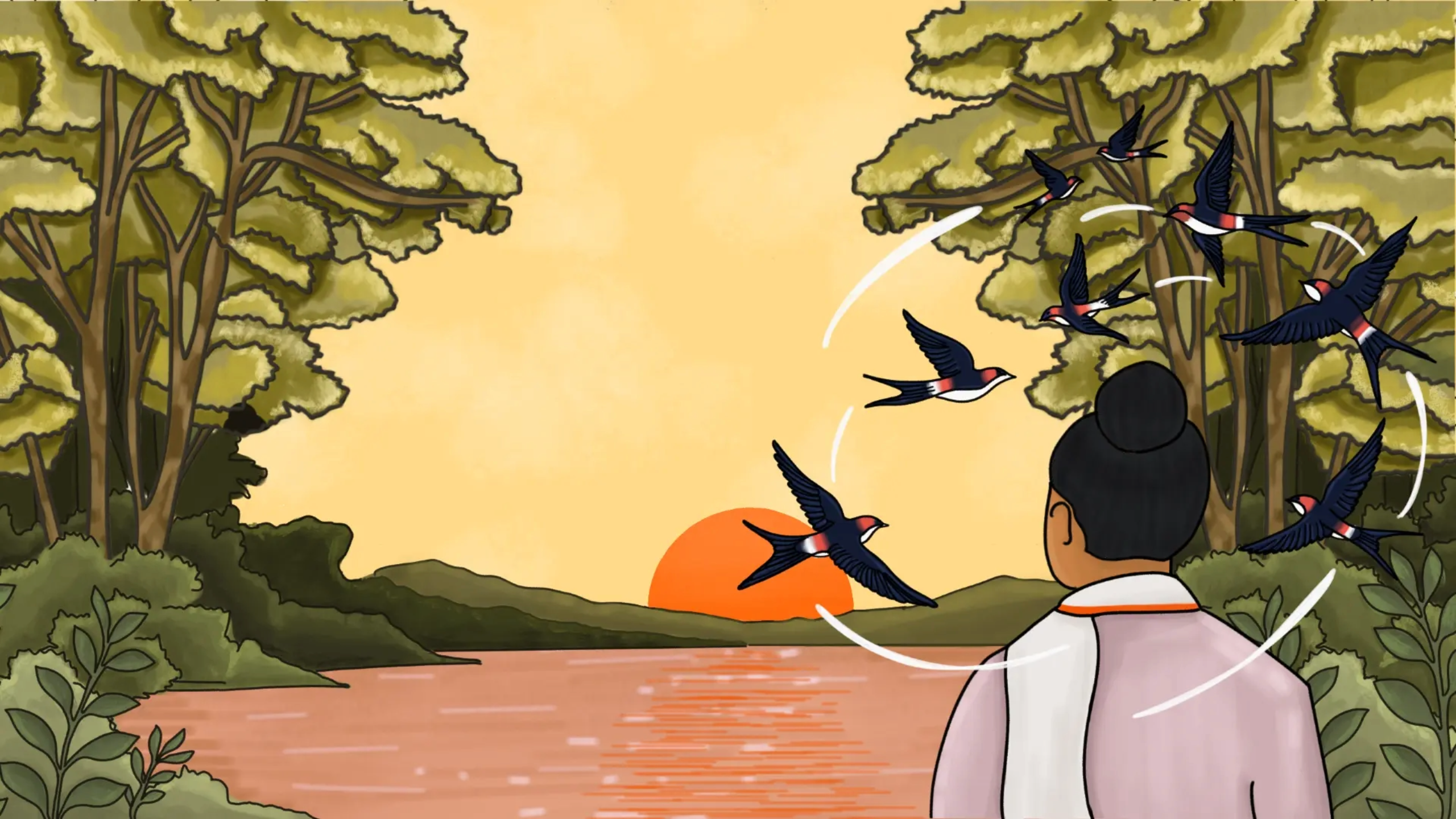
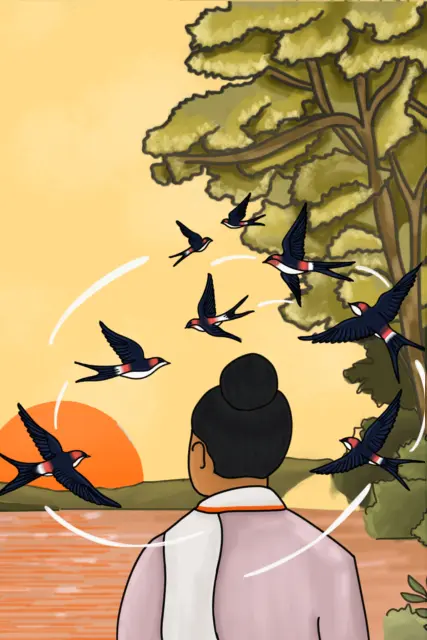

.jpg)

.avif)
.png)
